Bean-to-Bar Chocolate made in Madagascar
Chocolaterie Robert purchases its organic and fine quality cocoa from the farms of about 120 independent farmers in the Sambirano Valley in the north of Madagascar. The fertile north is the hottest and wettest region of Madagascar. The near location to the equator, the regular rainfall especially in the months from December to March and the average temperature of 25°C are the ideal conditions for growing cocoa. Most of the farmers are cocoa farmers in 2nd or 3rd generation. Cocoa farming is often a family business and depending on the size of the plantation, the entire family helps to harvest and process the cocoa.
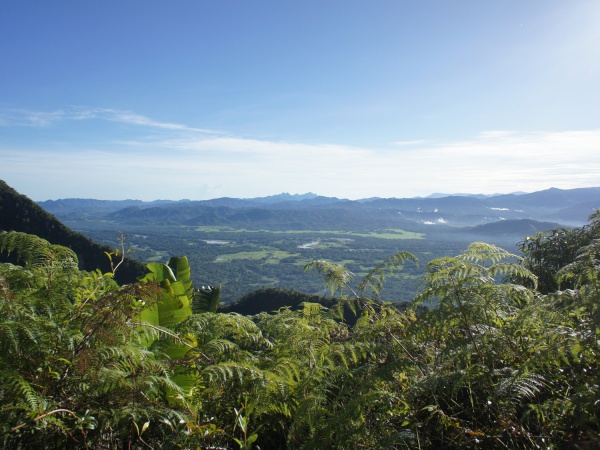
|
In the Sambirano region all three types of cocoa grow: Criollo, Forastero and Trinitario. Criollo is a rare species, which only grows in rainy regions such as at the foot of the mountains in the Sambirano valley. Criollo is a very sensitive and not very fruitful species. Compared with the other cocoa species, the Criollo pods have an uneven surface. The beans have a delicate flavour which is especially suitable for chocolates with a high percentage of cocoa. A cut Criollo bean has an almost white colour inside.

| ||
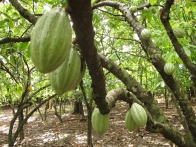
|
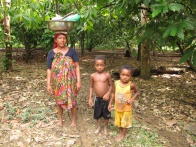
|
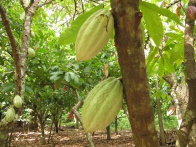
|
Forastero is more resilient than Criollo and therefore easier to farm. The Forastero species produces more cocoa than Criollo or Trinitario. The pods have a rounder form and a smooth surface. Unfortunately Forastero has a more bitter flavour and is therefore mainly used for milk chocolate or cocoa powder. A cut Forastero bean is violet.
Trinitario is a relatively recent crossing between Criollo and Forastero and therefore combines the high quality of Criollo with the resistance of Forastero. Trinitario is the most common cocoa in Madagascar. A cut Trinitario bean is dark.
The soft, white fruit pulp of a ripe cocoa pod is sugar sweet and rich in Vitamin C. Children, but also adults, like to chew on fresh pulps.
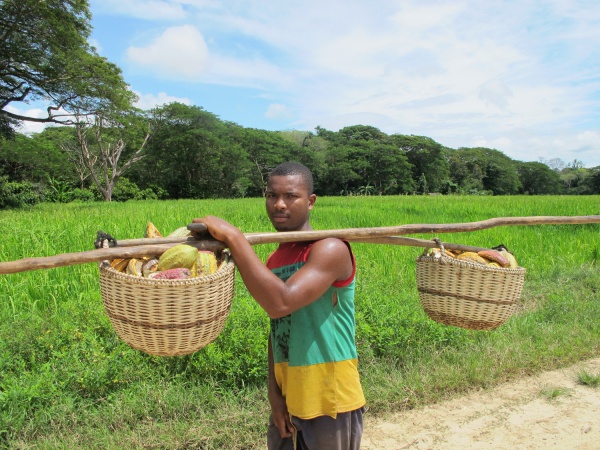
| ||

|
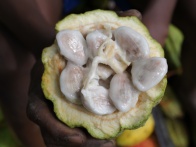
|
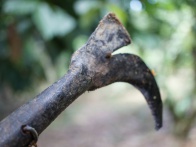
|
Cocoa trees grow best in the shade of other trees, such as fruit trees, acacia or wild ylang-ylang. Most of the cocoa fruits grow on the tree stem, others on branches. The quality of cocoa does not depend on the colour of the pods. Ripe cocoa fruits can be harvested throughout the entire year. Harvesting usually takes place in the morning hours, whereby the farmer carefully chops the fruit off their stems with a special harvesting knife (a type of machete on a stick with a round peak, similar to a hook). The farmer needs to be very careful not to harm the floral button, from where a new flower will grow. Thereafter the farmer opens the pod and separates the beans from the fruit pulp by hand. Each fruit contains about 50 seeds.
The fresh cocoa beans are brought to a fermentation station, which is usually a 3-level wooden box fermentation device. The beans are thrown into the upper wooden box and every second day they are shuffled by hand from the higher box into the lower box. The fermentation is one of the most important steps in the production procedure of quality cocoa. Due to the high sugar contents of the fruit pulp the fermentation begins immediately. During the 6 to 7 days of fermentation a temperature of up to 50°C develops and the fruit pulp evaporates. The shifting of the beans is very important in order to add necessary oxygen for the right chemical process to occur. Beans of the same size ensure an even fermentation.
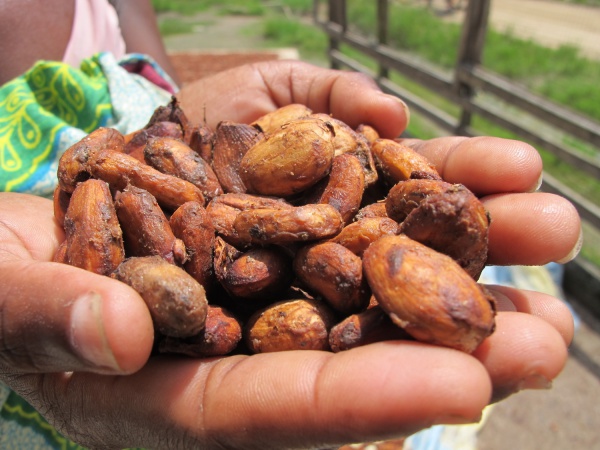
| ||
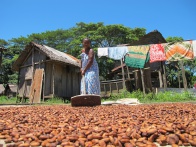
|
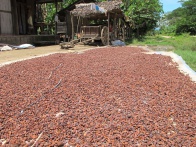
|

|
After the fermentation the beans are dried for 1 to 2 weeks in the direct sun (5 days in the dry season and 10 days in the rainy season). The sun affects the flavour of the beans. The beans must dry equally and steadily and are therefore turned upside down several times a day. The drying makes the beans durable and storable. Insufficiently dried beans are just dry outside and still moist inside and will easily moulder. Too fast drying creates unwanted flavours. Throughout the drying process the weight of the beans reduces to about half or even less and the moisture content is reduced to 7%.
After drying, the beans are selected by hand to sort out rotten or damaged beans. Thereafter the dry beans are packed into sacks and transported to the factory. For ideal transport and storing the beans should have a moisture of 6-8% and the humidity of the storage should not exceed 75%.
